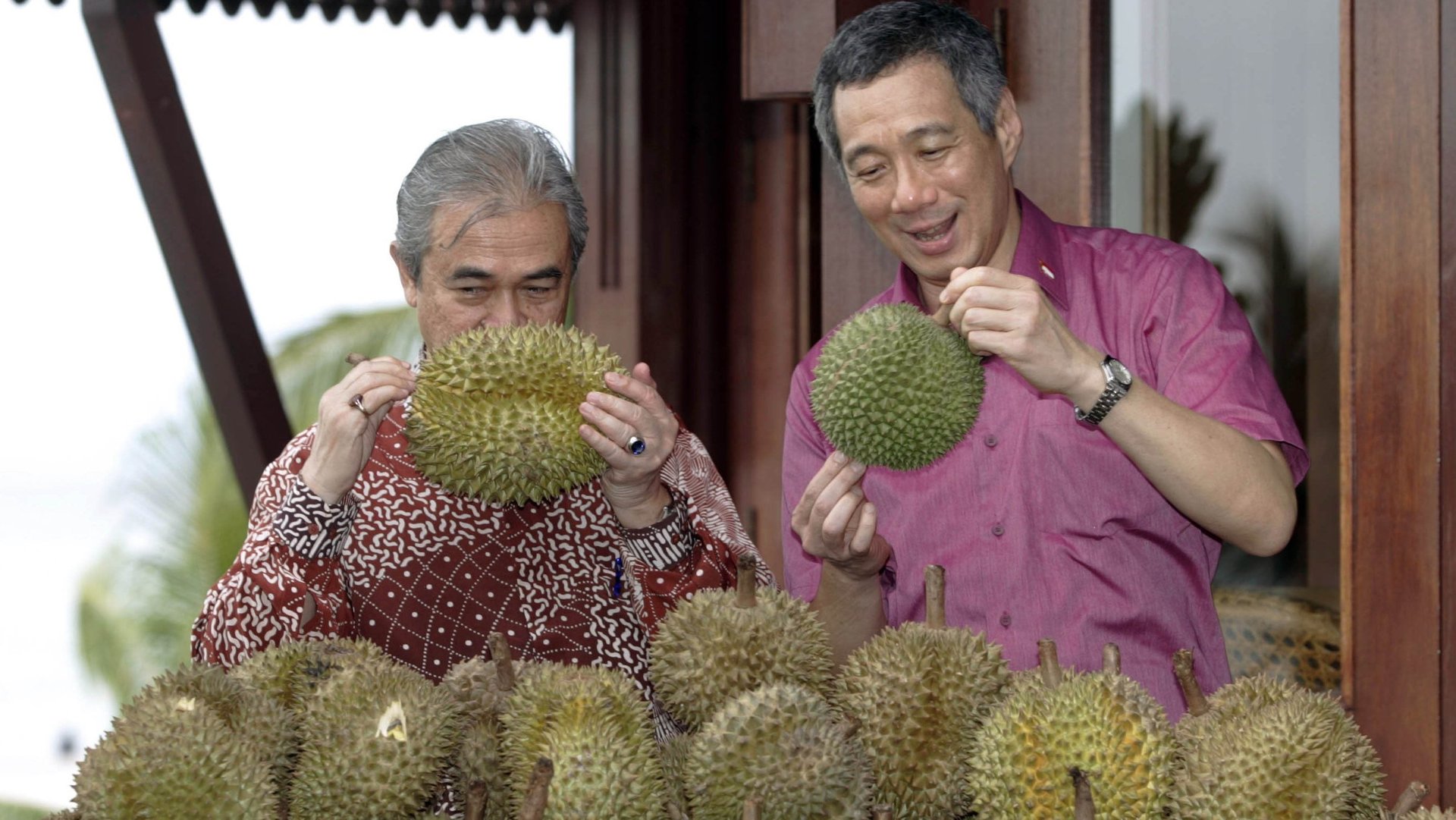Why does durian smell? A new genetics theory explains why
Durian is known for its onion-like odor—that’s a charitable description—which repels many, while others love it. It’s so strong that Singapore, despite consuming vast quantities of the enormous spiky fruit, bans it on public transport.


Durian is known for its onion-like odor—that’s a charitable description—which repels many, while others love it. It’s so strong that Singapore, despite consuming vast quantities of the enormous spiky fruit, bans it on public transport.
But what gives durian its distinctive, um, bouquet? Researchers mapping the durian’s genome have an answer.
In a peer-reviewed study, published yesterday (Oct. 9) in Nature, researchers from Singapore, Malaysia, and Hong Kong compiled the most complete genome map of durian so far, and identified a group of genes responsible for the fruit’s odor of sulfur and onions. As durian ripens, volatile sulfur compounds contribute to its smell.
In July last year, scientists picked out popular varieties from around 30 species of the fruit, which is mainly cultivated in Malaysia, Thailand, and Indonesia. The varieties selected included Musang King, with a turmeric-yellow interior and bitter taste that is enjoyed in Malaysia and Singapore, and Monthong, a sweeter type favored in Thailand. They then used different genetic sequencing techniques to draw genetic pictures of the fruit, identifying some 45,000 gene models.
To investigate the distinctive traits of durian, researchers also compared its genome to 10 other plant species, such as cacao, the essential ingredient in chocolate. Durian shared the most genes with cacao and cotton, which all belong to the Malvales plant family, noted the study.
But durian experienced genomic expansions that ultimately yielded its unique smell. Researchers found an expansion in pathways associated with volatile sulfur-containing compounds (pdf, p. 6) that generate strong odors resembling garlic, rottenness, and cabbage, and that are likely responsible for the distinctive durian aroma.
The stinky smell helps the fruit propagate itself, researchers believe. By becoming ever more pungent in the ripening stage, the fruit’s odor probably attracts animals who can disperse its seeds.